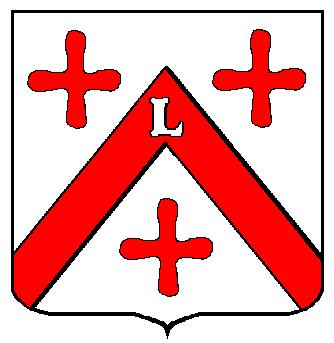- Lubumbashi
Infobox City
official_name=Ville de Lubumbashi
nickname=L'shi - Lubum
image_
map_caption=Location in the Congo
subdivision_type=Province
subdivision_name=Katanga
leader_title=Governor
leader_name=Moise Katumbi
area_note=
area_magnitude=1 E8
area_total_km2=747
area_land_km2=747
area_water_km2=
population_as_of=2001
population_metro=
population_total=1139064
population_density_km2=1525
timezone=DRC2
utc_offset=+2
latitude=11° 40' S
longitude=27° 29' W
website=
footnotes=
Location map
Democratic Republic of the Congo
label=Lubumbashi
lat_dir=S | lat_deg=11 | lat_min=40 | lat_sec=11
lon_dir=E | lon_deg=27 | lon_min=29 | lon_sec=00
position=top
width=250
float=right
caption=Lubumbashi in the Democratic Republic of the CongoLubumbashi (formerly Élisabethville or Elisabethstad) is the second largest city in the
Democratic Republic of the Congo (capitalKinshasa , formerlyZaire ) and the hub of the southeastern part of the country. The copper-mining city serves as the capital of the relatively prosperous Katanga (formerly Shaba) province, lying near theZambian border. Population estimates vary widely but average around 1.2 million.Geography
Lubumbashi lies at around 1,000 metres above
sea level . TheKafue River rises along the Zambian border near the city and meanders through parts of Zambia to theZambezi River .Government
From 2000-2006,
Floribert Kaseba Makunko served as mayor of Lubumbashi; he was later elected to the National Assembly in 2006.History
The
Belgians founded the city of "Élisabethville" (sometimes Elizabethville, both in French, or Elisabethstad in Dutch) in 1910. The city prospered with the development of a regional copper mining industry.Miners in Élisabethville conducted a strike in December 1941 to protest the increasingly severe forced-labor regime that the Belgians imposed on the population, because of the "war efforts".
The Belgians established the University of Élisabethville in 1954-1955 (now the
University of Lubumbashi ). In municipal elections in December 1957, the people of Élisabethville gave a vast majority to theNationalist Alliance de Bakongo , which demanded immediate independence from the Belgians.Élisabethville served as the capital and center of the secessionist independent state of Katanga during the bloody 1960-1963 Congolese civil war.
Moise Tshombe proclaimed Katangan independence in July 1960. Congolese leaders arrested him and charged him with treason in April 1961; however, he agreed to dismiss his foreign advisers and military forces in exchange for his release. Tshombe returned to Élisabethville but repudiated these assurances and began to fight anew.United Nations troops opposed Katangan forces and took control of the city in December 1961 under a strong mandate. Roger Trinquier, well known for his published works on counter-insurgency warfare, served as a French military advisor to President Tshombe until international pressure, led by Belgium, caused his recall to France.Mobutu Sese Seko ultimately assumed power and renamed Élisabethville "Lubumbashi" and, in 1972 renamed Katanga "Shaba."Congo entered another genocidal civil war in the 1990s. The
Alliance of Democratic Forces for the Liberation of Congo rebels captured Lubumbashi in April 1997. Rebel leaderLaurent-Désiré Kabila spoke from Lubumbashi to declare himself president of theDemocratic Republic of the Congo onMay 17 ,1997 after Mobutu Sese Seko fled Kinshasa.When Laurent-Désiré Kabila decided to appoint a transitional parliament, in 1999, a decision was made to install the Parliament in Lubumbashi, in order to consolidate the fragile unity of the country. The parliament was installed in the building of the National Assembly of secessionist Katanga, which had its capital in this city as well, in the 1960s. Lubumbashi was therefore the Legislative capital of the
Democratic Republic of the Congo from 1999 to 2003, when all the country's central institutions were brought back to Kinshasa.Culture and economy
Heptop serves as an important commercial and national industrial center. Manufactures include
textiles , food products and beverages,printing ,brick s, andcopper smelting.Lubumbashi lies at the centre of
railway lines toIlebo ,Kindu ,Sakania andKolwezi , however, because of the underinvestments, the railway lines aren't very reliable. Lubumbashi hosts the modernLuano International Airport and a dailynewspaper . The city consequently serves as a distribution center for such minerals ascopper ,cobalt ,zinc ,tin , andcoal .Attractions in the city include a
botanical garden , azoo , abrewery , and the regional archaeological and ethnologicalNational Museum of Lubumbashi . The city also hosts the majorUniversity of Lubumbashi , which maintains alibrary .Further reading
*
Tim Butcher : "Blood River - A Journey To Africa's Broken Heart", 2007. ISBN 0-701-17981-3External links
* [http://www.inchi-yetu.be/ Unofficial Katanga site]
* [http://www.lubumbashi.be/ Unofficial Belgian Lubumbashi site]
* [http://www.fondationmaisha.org/ Organization for street children in Lubumbashi]
* [http://www.luboom.com/ Unofficial English language site]
*
Wikimedia Foundation. 2010.

